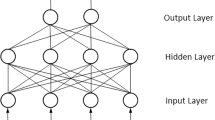Abstract
Wind speed time series exhibit complex patterns, thus integrating wind energy into the electrical system is challenging. This requires specialized skills for operations and planning practices. Training expert predictors on different parts of the time series enables the identification of complex local patterns. However, the partitioning procedure reduces the number of training instances. So, investigating the size of training partitions for an ensemble is desirable for predicting wind speed. Therefore, this paper proposes a homogeneous ensemble for local pattern recognition denoted as LocPart, that varies in partition size. The results of the Diebold-Mariano hypothesis test show promise for the LocPart method applied to three wind speed time series. The comparison was made relative to individual and bagging methods that use a global mapping of the respective base model of the proposal. The LocPart method with LSTM, ARIMA, and ELM base models won in 100%, 83%, and 50% of the cases, respectively.
Access this chapter
Tax calculation will be finalised at checkout
Purchases are for personal use only
Similar content being viewed by others
References
Qu, Z., Mao, W., Zhang, K., Zhang, W., Li, Z.: Multi-step wind speed forecasting based on a hybrid decomposition technique and an improved back-propagation neural network. Renew. Energy 133, 919–929 (2019)
Jiang, P., Wang, B., Li, H., Lu, H.: Modeling for chaotic time series based on linear and nonlinear framework: application to wind speed forecasting. Energy 173, 468–482 (2019)
Ahmadi, M., Khashei, M.: Current status of hybrid structures in wind forecasting. Eng. Appl. Artif. Intell. 99, 104133 (2021)
Hu, J., Wang, J., Zeng, G.: A hybrid forecasting approach applied to wind speed time series. Renew. Energy 60, 185–194 (2013)
Ferreira, M., Santos, A., Lucio, P.: Short-term forecast of wind speed through mathematical models. Energy Rep. 5, 1172–1184 (2019)
de Júnior, D.S.O.S., de Mattos Neto, P.S., de Oliveira, J.F., Cavalcanti, G.D.: A hybrid system based on ensemble learning to model residuals for time series forecasting. Inf. Sci. 649, 119614 (2023)
de Mattos Neto, P.S., Cavalcanti, G.D., Firmino, P.R., Silva, E.G., Nova Filho, S.R.V.: A temporal-window framework for modelling and forecasting time series. Knowl. Based Syst. 193, 105476 (2020)
Petropoulos, F., Hyndman, R.J., Bergmeir, C.: Exploring the sources of uncertainty: why does bagging for time series forecasting work? Eur. J. Oper. Res. 268(2), 545–554 (2018)
Bergmeir, C., Hyndman, R.J., Benítez, J.M.: Bagging exponential smoothing methods using STL decomposition and box-cox transformation. Int. J. Forecast. 32(2), 303–312 (2016)
Sergio, A.T., de Lima, T.P., Ludermir, T.B.: Dynamic selection of forecast combiners. Neurocomputing 218, 37–50 (2016)
Ruiz-Aguilar, J.J., Turias, I., González-Enrique, J., Urda, D., Elizondo, D.: A permutation entropy-based EMD-ANN forecasting ensemble approach for wind speed prediction. Neural Comput. Appl. 33(7), 2369–2391 (2021)
Jiang, Z., Che, J., Wang, L.: Ultra-short-term wind speed forecasting based on EMD-VAR model and spatial correlation. Energy Convers. Manage. 250, 114919 (2021)
Hyndman, R.J., Athanasopoulos, G.: Forecasting: principles and practice. OTexts, 3 ed. (2021)
Bowden, G.J., Maier, H.R., Dandy, G.C.: Optimal division of data for neural network models in water resources applications. Water Resour. Res. 38(2), 2–1 (2002)
Dawson, C.W., Wilby, R.: An artificial neural network approach to rainfall-runoff modelling. Hydrol. Sci. J. 43(1), 47–66 (1998)
Torres, J.L., Garcia, A., De Blas, M., De Francisco, A.: Forecast of hourly average wind speed with ARMA models in Navarre (Spain). Sol. Energy 79(1), 65–77 (2005)
Salcedo-Sanz, S., Ortiz-Garcı, E.G., Pérez-Bellido, Á.M., Portilla-Figueras, A., Prieto, L., et al.: Short term wind speed prediction based on evolutionary support vector regression algorithms. Expert Syst. Appl. 38(4), 4052–4057 (2011)
Saavedra-Moreno, B., Salcedo-Sanz, S., Carro-Calvo, L., Gascón-Moreno, J., Jiménez-Fernández, S., Prieto, L.: Very fast training neural-computation techniques for real measure-correlate-predict wind operations in wind farms. J. Wind Eng. Ind. Aerodyn. 116, 49–60 (2013)
Liu, X., Lin, Z., Feng, Z.: Short-term offshore wind speed forecast by seasonal ARIMA-A comparison against GRU and LSTM. Energy 227, 120492 (2021)
INPE. Rede do sistema de organização nacional de dados ambientais (2020). http://sonda.ccst.inpe.br/index.html. Accessed 27 Jul 2023
ABEEólica, A.B.E.E.: Abeeólica | infovento. INFOVENTO 31, 15 de junho de 2023 (2023)
Cerqueira, V., Torgo, L., Soares, C.: A case study comparing machine learning with statistical methods for time series forecasting: size matters. J. Intell. Inf. Syst. 59(2), 415–433 (2022)
Adhikari, R., Verma, G., Khandelwal, I.: A model ranking based selective ensemble approach for time series forecasting. Procedia Comput. Sci. 48, 14–21 (2015)
R Core Team. R: A language and environment for statistical computing (2023)
Tu, C.-S., Hong, C.-M., Huang, H.-S., Chen, C.-H.: Short term wind power prediction based on data regression and enhanced support vector machine. Energies 13(23), 6319 (2020)
Diebold, F.X., Mariano, R.S.: Comparing predictive accuracy. J. Bus. Econ. Stat. 13(3), 253–263 (1995)
Author information
Authors and Affiliations
Corresponding author
Editor information
Editors and Affiliations
Rights and permissions
Copyright information
© 2025 The Author(s), under exclusive license to Springer Nature Switzerland AG
About this paper
Cite this paper
Almeida, D.M., Neto, P.S.G.d.M., Cunha, D.C. (2025). A New Ensemble with Partition Size Variation Applied to Wind Speed Time Series. In: Quintián, H., et al. Hybrid Artificial Intelligent Systems. HAIS 2024. Lecture Notes in Computer Science(), vol 14858. Springer, Cham. https://doi.org/10.1007/978-3-031-74186-9_5
Download citation
DOI: https://doi.org/10.1007/978-3-031-74186-9_5
Published:
Publisher Name: Springer, Cham
Print ISBN: 978-3-031-74185-2
Online ISBN: 978-3-031-74186-9
eBook Packages: Computer ScienceComputer Science (R0)




